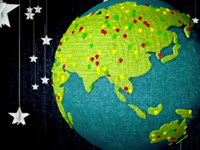Google for Nonprofits Newsletter - June 2012
90 views
Skip to first unread message
Leslie Hernandez
Jun 29, 2012, 8:13:02 PM6/29/12
to googlefor...@googlegroups.com
|
| ||||||||||
| Google for Nonprofits Newsletter - June 2012 | ||||||||||
|
| ||||||||||
| June 29, 2012 | ||||||||||
| ||||||||||
| ||||||||||
| Greetings from the Google for Nonprofits team! Google worked with some awesome nonprofits in June. Recently, the World Food Programme was featured as YouTube’s June “On The Rise” nonprofit partner, and was included in the “Spotlight” section of the YouTube homepage. Google also joined NGOs and heads of state at the United Nations Conference on Sustainable Development, also known as Rio+20. Finally, Google partnered with HandsOn Network to create HandsOn Tech, a program that pairs U.S.-based nonprofits with individuals who are passionate about technology and looking to make a difference. Read on for more updates on Google Search, Endangered Languages and Google I/O. Have a wonderful and productive July. | ||||||||||
| ||||||||||
| ||||||||||
| ||||||||||
| ||||||||||
| ||||||||||
| ||||||||||
| Q. Why is Google Crisis Response important for nonprofits? A. The goal of the Crisis Response team is to make critical information more accessible in times of disaster. We use data which exists to help nonprofits, governments, first responders and others to act on the ground during natural disasters and times of crisis. We provide aid to response efforts by giving them relevant information or working with them to make information more available. We also try to provide a means for people to get in touch with Nonprofits, for example, working with them to help people donate to their cause. We also set up pages that feature charities involved in particular disaster relief. We accomplish this with our various tools, which are available to users. The full list can be found on our main site, and include Public Alerts, Person Finder, Custom Google Maps, and Fusion Tables. Q. Can you share any cool stories of nonprofit organizations using Crisis Response products? A. There are many examples, as Crisis Response involves many applications. One example pertained to the response efforts of the 2011 Christchurch, NZ earthquake. David Knight was a resident who witnessed the destruction and was inspired to do something. He and his co-workers used the Google Maps custom maps tool to pull important information, ranging from water and food resources to shelter, on websites and spreadsheets and convert that information into maps for easy access. With a group of PR volunteers, they spread the word on their shared map so citizens could have access to information. For more information on this case study, refer to this page. Another example occurred during the 2011 Japan Earthquake in Toyko. Google Person Finder was used extensively by individuals such as Rie Kawai and Aki Kohata who were able to locate their missing grandfather. Toshiko Ayano used it to find 5 missing relatives. Q. What are some new features in Crisis Response that nonprofits should know about? A. This section of the Google.org site offers a list of all our resources, along with case studies that pertain to the products. These are real life examples of how various individuals and emergency response crews used Crisis Response technology to aid in relief efforts. Q. Where can nonprofits go to find resources and support for Crisis Response? A. Crisis Response is part of Google.org, so its main site offers context on our team. You can find a link to the Crisis Response page off the Google.org site here. That page also provides useful information and links to other Google.org projects, such as Google Flu & Dengue Trends and of course, Google for Nonprofits. | ||||||||||
| ||||||||||
|
Share your story! Have you had a great experience with a Google product that you'd like to share? Tell us about it. |
||||||||||
| ||||||||||
| If someone sent you this email and you’d like to join our mailing list, click here. | ||||||||||
|
Reach more donors | Improve operations | Raise awareness Make a change: google.com/nonprofits | ||||||||||
| 2012 Google Inc. All Rights Reserved. Google and the Google logo are trademarks of Google Inc. www.google.com 1600 Amphitheatre Parkway, Mountain View, CA 94043 |
Reply all
Reply to author
Forward
0 new messages







